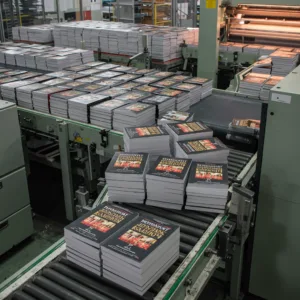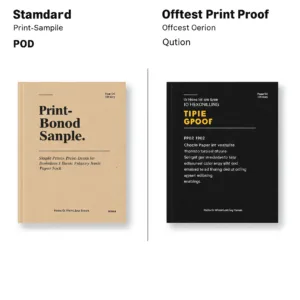Self-publishing can feel like navigating a maze, especially if you’re a first-timer. This FAQ is your GPS. We’ve broken down every step, cost, and common pitfall so you can confidently publish your book and reach your readers.
Self-publishing involves a series of key steps: writing and editing your manuscript, designing a professional cover, formatting the interior for ebook and/or print, obtaining an ISBN (if necessary), choosing a publishing platform (like Amazon KDP or IngramSpark), uploading your files, setting your price, and marketing your book.
The total cost can vary significantly, from virtually free (if you DIY everything) to several thousand dollars (for professional editing, cover design, and marketing services). While Amazon KDP offers a free ISBN option (ASIN), a purchased ISBN from Bowker is recommended for wider distribution, especially for print.
This guide goes way beyond the basics. We’ll reveal proven strategies for pricing, marketing, avoiding costly mistakes, and building a lasting author platform.
Section 1: Pre-Publishing – Planning & Preparation

What are the first steps to self-publishing?
The very first step, of course, is having a completed manuscript. You’ve written your book – congratulations! Now, it’s time for some crucial preparation. Start with self-editing, meticulously reviewing your work for any typos, grammatical errors, or inconsistencies. Remember, while “done is better than perfect,” striving for a polished manuscript is essential.
Next, strongly consider professional editing. Don’t skip this step! A professional editor, as Author Sonmission explains, brings a fresh, objective perspective and expertise that can significantly elevate your book’s quality.
There are different types of editing to be aware of: developmental editing (focuses on big-picture elements like plot and structure), copy editing (focuses on grammar, style, and consistency), and proofreading (the final check for errors). Expect to pay between $0.02 and $0.05 per word for basic editing services, which translates to roughly $1,000-$2,500 for a 50,000-word book.
Beyond editing, begin thinking about your target audience. Who are you writing for? Understanding your ideal reader will help you make informed decisions about everything from cover design to marketing strategies. And don’t be afraid to target a niche.
As Orna Ross, Founder-Director of the Alliance of Independent Authors (ALLi), puts it: “Self-publishing, done well, offers authors creative freedom, financial control, and a direct connection with readers. It’s not a second-best option; it’s a first-choice publishing route for many successful authors.” This direct connection is especially valuable in smaller, more engaged communities.
Finally, even before your book is published, start building your author platform. This could include a simple website, a presence on social media platforms relevant to your genre, and the beginnings of an email list.
How much does it cost to self-publish a book?
This is one of the most common questions, and the answer is: it depends! Self-publishing costs are variable, meaning they fluctuate based on the services you choose. Think of it as a spectrum. At one end, you could theoretically publish an eBook on Amazon KDP with virtually zero upfront cost (if you DIY everything).
At the other end, you could invest thousands in professional editing, a custom-designed cover, and extensive marketing. A realistic budget for a quality self-published book typically ranges from $500 to $5,000. Here’s a breakdown of potential expenses:
- Editing: (As mentioned above, $0.02-$0.05 per word is a good estimate).
- Cover Design: Professional custom designs can range from $200 to $800, while pre-made covers are a more budget-friendly option at $50-$200. However, be cautious with pre-mades.
- Formatting: If you’re comfortable with technology, software like Vellum (Mac only, starting at $249) or Atticus (cross-platform, $147 one-time fee) can make the process much easier. You can also find free options, like the Reedsy Book Editor.
- ISBN: In the US, a single ISBN costs $125, but purchasing a block of 10 from Bowker can significantly reduce the per-ISBN cost (a 10-pack is $295, saving you 70%). Some platforms, like Amazon KDP, provide a free ISBN, though this ties your book’s publisher information to that platform. For more detail, read our article, “7 Steps to Get Your ISBN Number and Publish Your Book“.
- Marketing: This is entirely up to you, and can range from free (social media, email marketing) to thousands of dollars (paid advertising).
Do I need an ISBN for my book?
An ISBN, or International Standard Book Number, is a 13-digit unique identifier for your book. It’s essential for selling print books through most retailers and distributors. For eBooks, it’s a bit more nuanced. Amazon KDP, for example, doesn’t require an ISBN; they assign their own identifier called an ASIN (Amazon Standard Identification Number).
However, if you plan to distribute your eBook widely through other platforms, or if you plan to publish a print edition, getting an ISBN is highly recommended. It gives you more control and flexibility. You can purchase ISBNs directly from Bowker, the official ISBN agency in the United States.
How do I protect my copyright?
Here’s some good news: in the United States, your work is automatically protected by copyright the moment it’s created in a tangible form (written down, saved on your computer, etc.). You don’t have to register your copyright to have this basic protection, which lasts for your lifetime plus 70 years. However, for added legal protection, particularly if you anticipate needing to pursue legal action against infringement, registering your copyright with the U.S. Copyright Office is a smart move.
It creates a public record of your ownership and allows you to sue for statutory damages and attorney’s fees. The registration fee ranges from $45 to $125. You can find all the details and register online at the official website. While features like Digital Rights Management (DRM) are available, they are not a foolproof solution and opinions about their usefulness vary.
What is the difference between ISBN and ASIN?
As we’ve touched on, an ISBN (International Standard Book Number) is a globally recognized identifier used for books across various platforms and retailers. An ASIN (Amazon Standard Identification Number), on the other hand, is specific to Amazon. It’s automatically assigned to your book when you publish it through KDP. If you’re only selling your eBook on Amazon, an ASIN is all you’ll need. But for broader distribution and print versions, an ISBN is the way to go.
Section 2: Production – Formatting, Design, and Platform Choice

How do I format my book for self-publishing?
Professional formatting is crucial for a positive reading experience. A poorly formatted book, with inconsistent fonts, awkward spacing, or incorrect margins, can instantly turn readers off, even if the content is fantastic. Thankfully, you don’t have to be a tech whiz to format your book well.
Kindlepreneur offers a comprehensive guide to book formatting, simplifying the process. Software like Vellum (for Mac users) and Atticus (for both Mac and PC) are specifically designed for book formatting and offer user-friendly interfaces. Reedsy Book Editor is another free alternative. These tools allow you to easily adjust font sizes, styles, chapter headings, and spacing to create a visually appealing and professional-looking book.
If you’re creating a print book, you’ll also need to understand concepts like “bleed” and “trim size.” “Bleed” refers to the extra area around the edges of your pages that gets trimmed off during the printing process. This ensures that images or colors that extend to the edge of the page don’t have a white border. “Trim size” is the final, finished size of your book after trimming.
The most common trim size in the US is 6×9 inches. Your printing service (like IngramSpark or potentially even a B2B manufacturer like Mainland Printing for larger runs) will provide specific guidelines for bleed and trim size.
If you are considering printing, take a look at, “How to Prepare Your Book Files for Printing?“.
How do I get a great book cover?
Your book cover is your first impression – it’s the single most important visual element for attracting readers. A professionally designed cover signals quality and credibility. Make sure to avoid common “printing mistakes in book” when design your book cover. You have several options:
- Hire a Professional Designer: This is the recommended route for most authors. Platforms like 99designs, Fiverr, and Reedsy connect you with experienced book cover designers. Expect to pay between $200 and $800 for a custom design. Communicate your book’s genre, target audience, and overall mood clearly to the designer.
- Use Pre-made Covers: These are pre-designed covers that you can purchase and customize with your book title and author name. They’re a more affordable option (typically $50-$200), but be sure to choose a design that truly fits your book and isn’t generic. And, be aware of the long term implications.
- DIY Design: If you have design skills, you can use tools like Canva to create your own cover. Canva offers templates and a user-friendly interface. However, unless you have a strong design background, it’s often best to leave this to the professionals.
Which self-publishing platform should I choose?

This is a crucial decision, and the best platform for you depends on your goals and your book’s format (eBook, print, or both). Here are the major players:
- Amazon Kindle Direct Publishing (KDP): KDP is the dominant force in the eBook market. It’s incredibly easy to use, offers a massive reach to Amazon’s customer base, and provides a 70% royalty option for eBooks priced between $2.99 and $9.99. However, to access certain promotional tools (like Kindle Unlimited and Kindle Countdown Deals), you’ll need to enroll in KDP Select, which requires exclusivity to Amazon for 90 days.
- IngramSpark: IngramSpark is a popular choice for authors who want broader distribution, particularly for print books. It provides access to a vast network of bookstores, libraries, and online retailers (including Barnes & Noble). IngramSpark also offers print-on-demand services. The royalties are generally lower than KDP (around 40%-60% for print books, depending on the distribution channels), and the setup process can be a bit more complex.
- Other Platforms: There are other platforms to consider, such as Apple Books, Google Play, Kobo, and eBook distributors like Draft2Digital, Smashwords, PublishDrive, and StreetLib. These can be useful for reaching specific audiences or expanding your reach beyond Amazon.
To help you decide, here’s a quick comparison table:
| Feature | Amazon KDP | IngramSpark |
|---|---|---|
| Royalties: | Up to 70% (eBooks), ~60% (print) | ~40%-60% (print), varies for eBooks |
| Distribution: | Primarily Amazon | Wide distribution to bookstores & libraries |
| Print Options: | Print-on-demand | Print-on-demand |
| Ease of Use: | Very easy | More complex |
| Exclusivity: | Optional (KDP Select) | No exclusivity required |
How do I upload my book to Amazon KDP (or IngramSpark)?
The specific upload process varies slightly between platforms, but the general steps are similar:
- Create an Account: Sign up for a free account on the platform you choose.
- Enter Book Details: Provide information about your book, including title, subtitle, author name, description, keywords, and categories. This is crucial for discoverability.
- Upload Files: Upload your formatted manuscript file (usually a .doc, .docx, or .epub for eBooks, and a PDF for print books) and your cover image file.
- Set Price: Determine the price for your book, considering your genre, competitor pricing, and royalty options.
- Publish: Once the platform’s checks, you are ready to publish.
It’s essential to follow each platform’s specific guidelines and instructions carefully. Don’t try to rush this process. Thankfully, both KDP and IngramSpark offer detailed, step-by-step guides on their websites. We highly recommend you follow those official instructions rather than relying solely on third-party tutorials, as platform requirements can change.
Section 3: Post-Publishing – Marketing & Sales

How do I market my self-published book?
Marketing is where many self-published authors struggle, but it’s absolutely essential for success. Think of marketing as building a long-term relationship with your readers, while promotion is more about short-term sales boosts. Here are some key strategies:
- Build Your Author Platform: This is your home base online. It should include a professional-looking website (even a simple one), a presence on social media platforms where your target readers hang out, and, crucially, an email list. An email list allows you to communicate directly with your most engaged fans.
- Get Book Reviews: Reviews are social proof and can significantly influence purchasing decisions. Send out Advanced Reader Copies (ARCs) to reviewers before your book launches. Reach out to book bloggers, book reviewers, and relevant media outlets.
- Optimize your book listing: Keywords and the right categories are essential.
- Free Strategies: Utilize Amazon’s Author Central page to its fullest. Engage with readers on Goodreads.
- Paid Strategies: Consider running ads on Amazon, Facebook, or BookBub. These can be effective for reaching a wider audience, but require careful budgeting and targeting. Start small and track your results.
How should I price my book?
Pricing your book is a delicate balance. You want to be competitive within your genre, attract readers, and also earn a fair return for your work. Here are some factors to consider:
- Genre: Romance eBooks, for example, tend to be priced lower than non-fiction business books. Research what similar books in your genre are selling for.
- Length: Shorter works (novellas, short stories) are typically priced lower than full-length novels.
- Author Platform: If you’re a brand-new author with a small platform, you might start with a lower price to attract initial readers. Established authors with a loyal following can often command higher prices.
- Competitor Pricing: Look at what other authors in your genre are charging for similar books. You don’t want to be significantly higher or lower than the average.
Here are some general pricing guidelines:
- eBooks: $2.99 – $9.99 is the sweet spot for the 70% royalty on Amazon KDP. Many new authors start at $0.99 or $2.99 to gain traction, then gradually increase the price.
- Print Books: Pricing depends heavily on printing costs. A common strategy is to use the print-on-demand platform’s calculator to determine your cost per book, then add your desired profit margin.
You can also experiment with pricing strategies like:
-
Loss Leader: Pricing your first book in a series very low (or even free) to attract readers who might then purchase subsequent books at a higher price.
-
Promotional Pricing: Offering temporary discounts or running limited-time free promotions to boost visibility and sales. A formula you could use: Electronic Book Suggested Price = Average price of similar books × (0.8-1.2) For Example, if the average price is $4.99, a new author might start at $3.99-$5.99.
How do I track my book sales and royalties?
Both Amazon KDP and IngramSpark provide dashboards where you can track your sales, royalties, and other key metrics. These dashboards offer valuable insights into your book’s performance, including:
-
Units Sold: The number of books sold each day, week, or month.
-
Royalties Earned: The amount of money you’ve earned from your book sales.
-
Sales Rank: Your book’s ranking on Amazon (for KDP) or other retailers (for IngramSpark).
-
Customer Reviews: Feedback from your readers.
Pay close attention to these metrics to understand what’s working and what’s not. Are your sales concentrated in a particular geographic area? Are certain marketing efforts driving more sales than others? Use this data to refine your strategies and maximize your reach.
What are the common mistakes self-published authors make?
Learning from the mistakes of others can save you time, money, and frustration. Here are some of the most common pitfalls to avoid:
- Poor Cover Design: A cheap-looking or amateurish cover is a major turnoff for potential readers.
- Bad Formatting: Inconsistent fonts, spacing issues, and typos can ruin the reading experience.
- No Editing: Skipping professional editing is a huge mistake. Even the best writers need an editor.
- Neglecting Marketing: “If you build it, they will come” does not apply to book publishing. You must actively market your book.
- Unrealistic Expectations: Self-publishing success takes time and effort. Don’t expect to become an overnight bestseller.
- Ignoring Keywords and Categories: Choosing the wrong keywords or categories on Amazon can make it difficult for readers to find your book.
- Incorrect Print Book Size: Be sure of the sizes your printer supports.
Self-Publishing vs. Traditional Publishing: Which is right for me?
This comes down to your personal goals. Traditional has prestige, but slow timelines and you lose a lot of control. Self-publishing means keeping creative control and earning higher royalties, but you are responsible for everything.
Conclusion
Self-publishing offers an incredible opportunity to share your stories with the world on your terms. It’s a path that rewards hard work, persistence, and a willingness to learn. Don’t let fear or self-doubt hold you back.
As Joanna Penn, bestselling author and founder of The Creative Penn, encourages: “There has never been a better time to be a writer. If you have a book inside you, then get it out there. Don’t wait for permission. Don’t wait for validation. Self-publish and start building your author platform today.” Embrace the challenge, learn from the process, and most importantly, just write the book!







